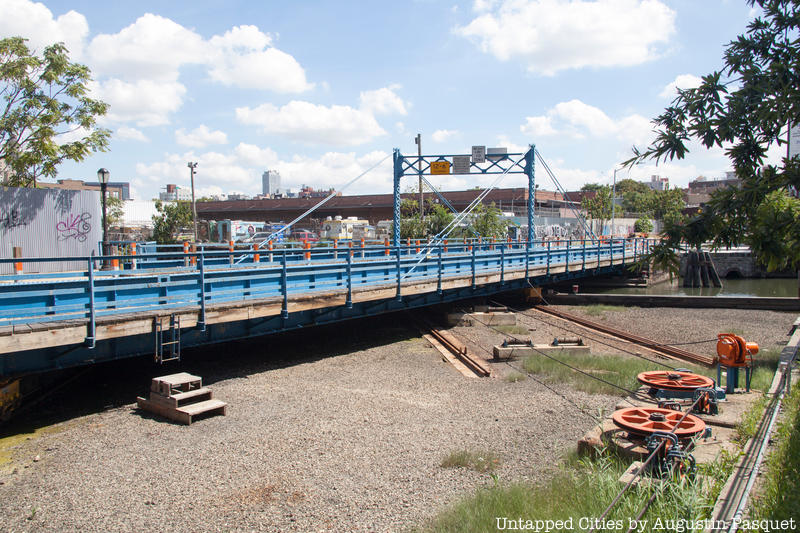
Across the United States, the power of organized labor has been largely diminished, but in New York City, unions remain relevant, throwing their muscle behind campaigns and driving public policy. Even here, however, labor has receded from its high-water mark, a moment that labor historian Joshua Freeman believes took place on June 8, 1971. On this day, New York City’s sewer and drawbridge systems were shutdown leading to an environmental moment the city would probably rather forget.
Political griping about the cost of public employee pension plans is not new. In 1971, DC 37, the union then representing about 125,000 civilian New York City government employees, sought a deal with Mayor John Lindsay’s administration that would have given high percentage pensions to its members upon retirement. At the time, city employees were not paid very much, so the pensions themselves were not lucrative, but they were still more than what most private sector workers made, at a time of economic uncertainty. (Sound familiar?)
While DC 37 and its intrepid leader, Victor Gotbaum, were satisfied with the deal, the law required the state legislature to approve it, because the benefits exceeded that of state employees. It’s hard to imagine now, but a mere 45 years ago Republicans controlled the governorship, State Senate and Assembly. The governor, Nelson Rockefeller, was no friend of Lindsay, one of many instances in New York history where mayors and governors from the same party have failed to get along. (Sound familiar?
The legislature gleefully rejected the pension plan. On June 7, 1971, DC 37 responded by launching a strike in tandem with the Teamsters to shut down the sewer and drawbridge systems. Union operators shut down 11 of the city’s 13 sewage treatment plants, depositing a billion gallons of sewage into New York’s waterways. More than 8,000 workers from different city agencies participated in the strike.
The bridge-tenders (there’s a cool-sounding job) wing of the Teamsters locked 28 of the city’s 29 moveable bridges open, preventing traffic from crossing at key intersections all over the city. (You can see a list of the city’s 25 remaining moveable bridges here.) Traffic jams were also significantly worsened by Teamsters drivers leaving their trucks turned off on key highways leading into the city. One union rep recalled: “I drove a getaway car. Workers left three or four big trucks across the lanes of the Major Deegan in the Bronx. They hopped in my car and I drove them out of sight.”
Lindsay furiously denounced the strike as “immoral, illegal and outrageous,” called in the Army Corps of Engineers to get the bridges functioning, and by June 8 traffic was flowing again.
This may have been the turning point for the labor movement in New York City. New Yorkers had weathered some pretty rough strikes in recent memory, including the disgusting garbage strike of 1968 and the transit strike of 1966. By this point, they’d had enough. Not only did the public turn on the sewer strikers, but usual allies like Democratic politicians and the New York Times were also critical, the Grey Lady sneering that New York City “has become prisoner of its pampered civil service unions.” Gotbaum and Teamsters leader Barry Feinstein were taken aback by the immediacy and ferocity of anti-strike sentiment, and called off the strike on June 8, after just two days. Gotbaum declared victory, and to this day DC 37’s website cites the strike as a historic win for retiree health insurance. At the time, however, the unions were left without a new pension plan, and within two years the state legislature even took away their right to bargain for one without legislative authorization.
The next decade wouldn’t help the standing of New York’s unions, as many suffered setbacks in the wake of the city’s devastating mid-70s financial crisis. (In Richard Ravitch’s memoir, he does single out teachers’ union leader Al Shanker for helping the city avoid bankruptcy.) In 1980 the Transit Workers Union suffered a major setback after launching an 11-day transit strike.
In recent decades, unions have done a much better job organizing in low-income communities and the service sector, swelling their membership with a diverse cross-current of New Yorkers. The ascendance of progressive Democrats in New York City governance, and, to a lesser extent, in state politics, has brought unions back to the table as important players. In an era lacking for inspiring, grassroots candidates, the money and labor that unions can throw at low-turnout elections can be very effective.
Read also about the Great Garbages Strike of 1968 and discover more NYC political history on janos.nyc





